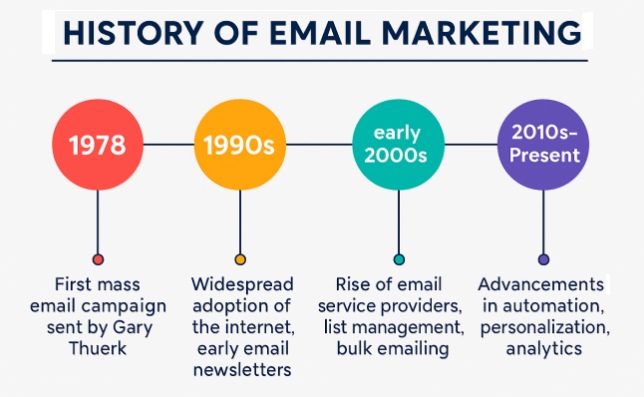Email marketing isn’t dead — far from it. In fact, it’s still one of the most cost-effective digital marketing tools available to businesses today.

Despite being one of the oldest digital channels, email marketing still boasts one of the highest ROI rates, especially for small and mid-sized businesses.
The numbers are impressive:
Use: 81% of small businesses rely on email as their primary customer acquisition channel.
Cost: The average ROI for email marketing is $36 for every $1 spent.
-
Conversions: 60% of consumers have made a purchase due to a marketing email
With that said, too many businesses still overlook many of the finer points that separate inbox clutter from high-performing campaigns.
Here’s how to make sure your company's emails actually work, earning you more clicks, conversions, and customers.
✅ 1. Build a Permission-Based, High-Quality List
Buying spammy email lists might seem like a shortcut but it’s often a fatal trap. Not only will you annoy people, but email platforms like Mailchimp or Kit might actually shut your account down.
Instead:
Give away lead magnets (helpful checklists, ebooks, or free consultations) to earn email sign-ups.
Add clear opt-in forms throughout your company's website and blog to collect contact data.
Collect emails in person — trade shows, networking events, and over the phone when talking to new prospects.
🗣️ 2. Write Your Emails Like You Talk
Forget stiff, robotic messaging. Your subscribers want to hear from a real human. Here's a useful format:
Subject Line: Ask a question, tease a benefit, or create urgency. Examples include: “Still struggling with debt?” or “Only 3 days left...”
Opening Line: Get to the point and set the tone fast.
Main Body: Tell a short story or share a useful tip — write just like you’re emailing a colleague.
-
Call to Action (CTA): Make only one ask in your content. “Schedule a consult,” “Download now,” or “Reply with questions.”
👀 Pro Tip: Watch out for tone drift — keep it friendly, not salesy, and conversational but professional.
🧩 3. Personalize Your Emails to Make Them Stick
Nobody wants to feel like just another name on a list. Personalization helps your email feel like a one-on-one message, and that can drive amazing results.
Use the subscriber’s first name in the subject line or greeting.
Reference their location, recent purchase, or browsing behavior when possible.
Tailor your content to fit segments (e.g., new leads vs. past buyers).
📬 Pro Tip: Emails with personalized subject lines have seen open rates increase by 26%, and segmented campaigns can drive up to 760% more revenue than one-size-fits-all email blasts.
⏰ 4. Optimize When You Send
Even the best-crafted email gets ignored if it shows up at the wrong time. Here’s what the data suggests:
Send midweek — Tuesday to Thursday are top performers.
Try morning slots (9–11 AM) for most B2B audiences.
For B2C lists, evenings or Sunday afternoons may work better.
But don't stop there. Run A/B tests — send the same email at different times to small list segments and see what works best.
🔁 Pro Tip: Resend unopened emails with a new subject line a day or two later. Easy lift, great results.
📱 5. Make It Mobile-Friendly
Today, more than 60% of emails are opened on phones. If your message is hard to read on a small screen, it won't get read very much.
Design suggestions:
Use a single-column layout.
Keep font sizes legible (14–16px body text minimum).
Limit image size and avoid heavy graphics.
Include touch-friendly buttons instead of small text links.
📲 Pro Tip: Before sending to your list, test your email first across multiple devices. Most email platforms let you preview your content on desktop and mobile devices.
📊 6. Track Email Performance and Adjust
What gets measured gets improved. Most platforms like Mailchimp, Constant Contact, or Kit provide built-in analytics:
Open Rate: Tells you how effective your subject line is.
Click Rate: Shows whether your content/CTA worked.
Unsubscribe Rate: Flags if you're off-message or emailing too often.
📈 Pro Tip: Only tweak one variable at a time — test different subject lines, layouts, or CTAs. It’s all about making micro-adjustments that add up in your favor over time.
🔓 7. Give Readers an Easy Way Out
This one’s often overlooked — but it’s legally required and builds trust: Make it easy for subscribers to unsubscribe.
Add a clearly visible “Unsubscribe” link that actually works at the bottom of every email.
Use clear language (e.g., “Click here to stop receiving emails”).
Consider offering preference options like “receive fewer emails” or “only promos.”
🧠 Why it matters: If readers can’t opt out easily, they’ll hit Spam, damaging your sender reputation and hurting future deliverability.
The Bottom Line on Email Marketing
Effective email marketing isn’t about sending more emails — it’s about sending the right email to the right person at the right time in the right tone.
Get those four elements dialed in, and even a small email list can become a powerful marketing engine for your business.
🎯 Need help with your email marketing? Book a free 30-minute consult with Steve.

 Add Row
Add Row  Add
Add 




Write A Comment